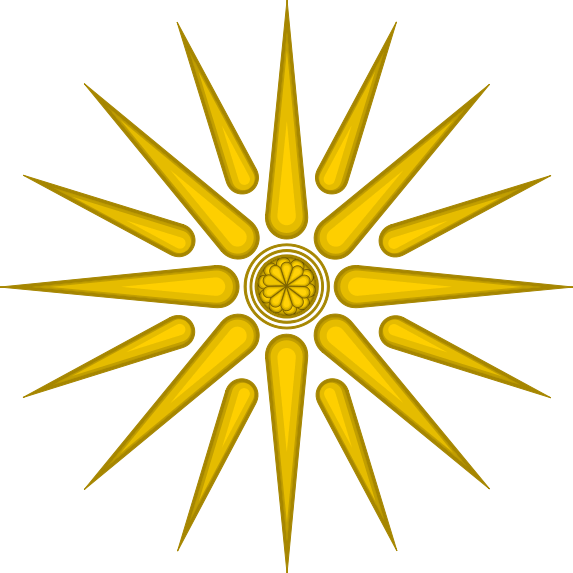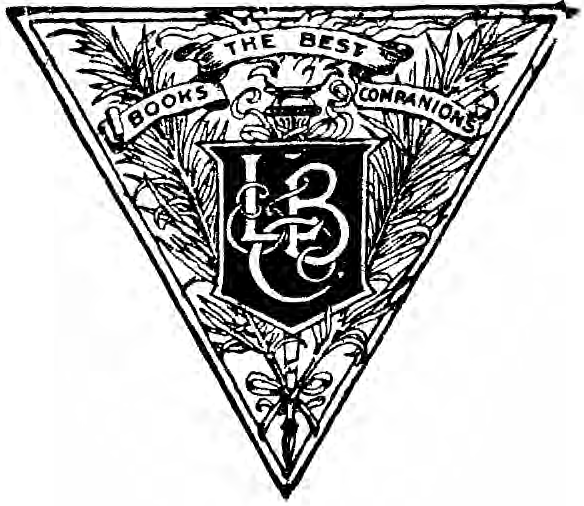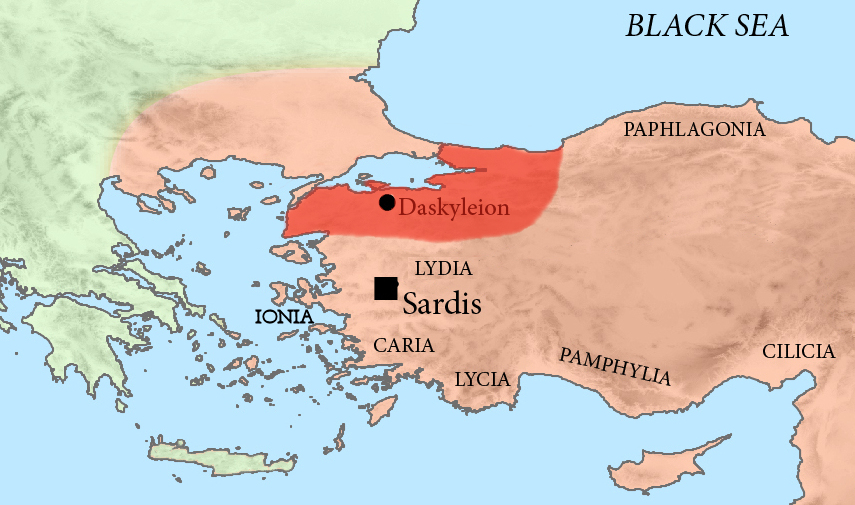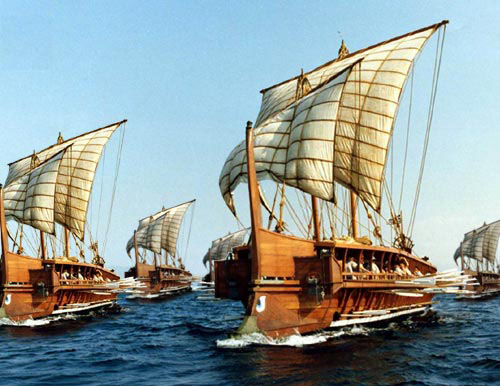|
Agis III
Agis III (Greek: ) was the eldest son of Archidamus III, and the 21st Eurypontid king of Sparta. Life Agis was the son of King Archidamus III () and the grandson of Agesilaus II (), who belonged to the Eurypontid dynasty, one of the two royal families of Sparta (the other being the Agiads). Following its defeat at Leuctra against Thebes in 371, Sparta lost its great power status within the Greek world, as well as a number of territories. In 351, Archidamus and Agis waged a war in the Peloponnese to recover these territories, notably against Megalopolis, a city established by the Thebans on its northwestern border in order to pose a permanent threat to Sparta.Cartledge, ''Hellenistic and Roman Sparta'', p. 10. Despite the support of 3000 mercenaries from Phocis, the campaign was fruitless.Cartledge, ''Hellenistic and Roman Sparta'', p. 10. Agis III succeeded his father on 2 August 338 BC, on the day of the Battle of Chaeronea. After his victory against the Greeks at Chaeronea, ... [...More Info...] [...Related Items...] OR: [Wikipedia] [Google] [Baidu] |
Ancient Greek
Ancient Greek includes the forms of the Greek language used in ancient Greece and the ancient world from around 1500 BC to 300 BC. It is often roughly divided into the following periods: Mycenaean Greek (), Dark Ages (), the Archaic period (), and the Classical period (). Ancient Greek was the language of Homer and of fifth-century Athenian historians, playwrights, and philosophers. It has contributed many words to English vocabulary and has been a standard subject of study in educational institutions of the Western world since the Renaissance. This article primarily contains information about the Epic and Classical periods of the language. From the Hellenistic period (), Ancient Greek was followed by Koine Greek, which is regarded as a separate historical stage, although its earliest form closely resembles Attic Greek and its latest form approaches Medieval Greek. There were several regional dialects of Ancient Greek, of which Attic Greek developed into Koine. Dia ... [...More Info...] [...Related Items...] OR: [Wikipedia] [Google] [Baidu] |
Sciritis
Sciritis or Skiritis ( grc, ἡ Σκιρῖτις) was a rugged and barren mountainous district in the north of ancient Laconia, between the upper Eurotas on the west and the Oenus on the east, and extending north of the highest ridge of the mountains, which were the natural boundary between Laconia and Arcadia. The name probably expressed the wild and rugged nature of the country, for the word signified hard and rugged (σκίρον, σκεῖρον, σκληρόν, Hesych). It was bounded by Maenalia on the north, and by Parrhasia on the west, and was originally part of Arcadia, but was conquered at an early period, and its inhabitants reduced to the condition of Lacedaemonian Perioeci. According to Xenophon they were subjected to Sparta even before the time of Lycurgus. They were distinguished above all the other Perioeci for their bravery; and their contingent, called the Σκιρίτης λόχος, 600 in number, usually occupied the extreme left of the Lacedaemonian wing. ... [...More Info...] [...Related Items...] OR: [Wikipedia] [Google] [Baidu] |
Battle Of Issus
The Battle of Issus (also Issos) occurred in southern Anatolia, on November 5, 333 BC between the Hellenic League led by Alexander the Great and the Achaemenid Empire, led by Darius III. It was the second great battle of Alexander's conquest of Asia, and the first encounter between Darius III and Alexander the Great. The battle resulted in the Macedonian troops defeating the Persian forces. After the Hellenic League soundly defeated the Persian satraps of Asia Minor (led by Greek mercenary Memnon of Rhodes) at the Battle of the Granicus, Darius took personal command of his army. He gathered reinforcements and proceeded to lead his men in a surprise march behind the Hellenic advance, in order to cut off their line of supply. Alexander was forced to countermarch, and the stage was set for the battle near the mouth of the Pinarus River and the town of Issus. Location The battle took place south of the ancient town Issus, which is close to the present-day Turkish town of Is ... [...More Info...] [...Related Items...] OR: [Wikipedia] [Google] [Baidu] |
Satrap
A satrap () was a governor of the provinces of the ancient Median and Achaemenid Empires and in several of their successors, such as in the Sasanian Empire and the Hellenistic empires. The satrap served as viceroy to the king, though with considerable autonomy. The word came to suggest tyranny or ostentatious splendour, and in modern usage refers to any subordinate or local ruler, usually with unfavourable connotations of corruption. A satrapy is the territory governed by a satrap. Etymology The word is derived via Latin from Greek ''satrápes'' (), itself borrowed from an Old Iranian ''*khshathra-pa''. In Old Persian, which was the native language of the Achaemenids, it is recorded as ''khshathapavan'' (, literally "protector of the province"). The Median form is reconstructed as ''*khshathrapavan-''. It is cognate with Sanskrit ''kshetrapal'' (). The Biblical Hebrew form is ''aḥashdarpan'' , as found in . In the Parthian (language of the Arsacid Empire) and Middle Persia ... [...More Info...] [...Related Items...] OR: [Wikipedia] [Google] [Baidu] |
Little, Brown And Company
Little, Brown and Company is an American publishing company founded in 1837 by Charles Coffin Little and James Brown in Boston. For close to two centuries it has published fiction and nonfiction by American authors. Early lists featured Emily Dickinson's poetry and ''Bartlett's Familiar Quotations''. Since 2006 Little, Brown and Company is a division of the Hachette Book Group. 19th century Little, Brown and Company had its roots in the book selling trade. It was founded in 1837 in Boston by Charles Little and James Brown. They formed the partnership "for the purpose of Publishing, Importing, and Selling Books". It can trace its roots before that to 1784 to a bookshop owned by Ebenezer Battelle on Marlborough Street. They published works of Benjamin Franklin and George Washington and they were specialized in legal publishing and importing titles. For many years, it was the most extensive law publisher in the United States, and also the largest importer of standard English law a ... [...More Info...] [...Related Items...] OR: [Wikipedia] [Google] [Baidu] |
Dictionary Of Greek And Roman Biography And Mythology
The ''Dictionary of Greek and Roman Biography and Mythology'' (1849, originally published 1844 under a slightly different title) is an encyclopedia/biographical dictionary. Edited by William Smith, the dictionary spans three volumes and 3,700 pages. It is a classic work of 19th-century lexicography. The work is a companion to Smith's ''Dictionary of Greek and Roman Antiquities'' and '' Dictionary of Greek and Roman Geography''. Authors and scope The work lists thirty-five authors in addition to the editor, who was also the author of the unsigned articles. The other authors were classical scholars, primarily from Oxford, Cambridge, Rugby School, and the University of Bonn, but some were from other institutions. Many of the mythological entries were the work of the German expatriate Leonhard Schmitz, who helped to popularise German classical scholarship in Britain. With respect to biographies, Smith intended to be comprehensive. In the preface, he writes: Much of the value ... [...More Info...] [...Related Items...] OR: [Wikipedia] [Google] [Baidu] |
Alexander The Great
Alexander III of Macedon ( grc, wikt:Ἀλέξανδρος, Ἀλέξανδρος, Alexandros; 20/21 July 356 BC – 10/11 June 323 BC), commonly known as Alexander the Great, was a king of the Ancient Greece, ancient Greek kingdom of Macedonia (ancient kingdom), Macedon. He succeeded his father Philip II of Macedon, Philip II to the throne in 336 BC at the age of 20, and spent most of his ruling years conducting a lengthy military campaign throughout Western Asia and ancient Egypt, Egypt. By the age of thirty, he had created one of the List of largest empires, largest empires in history, stretching from Greece to northwestern Historical India, India. He was undefeated in battle and is widely considered to be one of history's greatest and most successful military commanders. Until the age of 16, Alexander was tutored by Aristotle. In 335 BC, shortly after his assumption of kingship over Macedon, he Alexander's Balkan campaign, campaigned in the Balkans and reasserted control ... [...More Info...] [...Related Items...] OR: [Wikipedia] [Google] [Baidu] |
Pharnabazus, Son Of Artabazus
Pharnabazus III (Old Iranian: ''Farnabāzu'', Ancient Greek: ''Φαρνάβαζος''; c. 370 BC - after 320 BC) was a Persian satrap who fought against Alexander the Great. His father was Artabazus II, and his mother a Greek from Rhodes. Youth in Macedonia Pharnabazus was the son of Artabazus, satrap of Hellespontine Phrygia. However, Artabazus was exiled after a failed rebellion against Artaxerxes III in 358 BC. From 352 to 342, the family went into exile to Macedonia, in the capital of Pella, under the rule of king Philip II (360-336), where they met the young Prince Alexander, future Alexander the Great. With Artabazus and Pharnabazus was Memnon of Rhodes, a Greek mercenary and relative by marriage. Artabazus, Pharnabazus and Memnon were later allowed to return to Persia, in 343 BC. Memnon obtained the command of the Persian navy in the Aegean sea in 334 BC, with Pharnabazus joining him. War against Alexander When Alexander invaded the Persian empire, Memnon defended the ... [...More Info...] [...Related Items...] OR: [Wikipedia] [Google] [Baidu] |
Aegean Sea
The Aegean Sea ; tr, Ege Denizi (Greek language, Greek: Αιγαίο Πέλαγος: "Egéo Pélagos", Turkish language, Turkish: "Ege Denizi" or "Adalar Denizi") is an elongated embayment of the Mediterranean Sea between Europe and Asia. It is located between the Balkans and Anatolia, and covers an area of some 215,000 square kilometres. In the north, the Aegean is connected to the Marmara Sea and the Black Sea by the straits of the Dardanelles and the Bosphorus. The Aegean Islands are located within the sea and some bound it on its southern periphery, including Crete and Rhodes. The sea reaches a maximum depth of 2,639m to the west of Karpathos. The Thracian Sea and the Sea of Crete are main subdivisions of the Aegean Sea. The Aegean Islands can be divided into several island groups, including the Dodecanese, the Cyclades, the Sporades, the Saronic Islands, Saronic islands and the North Aegean islands, North Aegean Islands, as well as Crete and its surrounding islands. The ... [...More Info...] [...Related Items...] OR: [Wikipedia] [Google] [Baidu] |
Achaemenid Empire
The Achaemenid Empire or Achaemenian Empire (; peo, 𐎧𐏁𐏂, , ), also called the First Persian Empire, was an ancient Iranian empire founded by Cyrus the Great in 550 BC. Based in Western Asia, it was contemporarily the largest empire in history, spanning a total of from the Balkans and Egypt in the west to Central Asia and the Indus Valley in the east. Around the 7th century BC, the region of Persis in the southwestern portion of the Iranian plateau was settled by the Persians. From Persis, Cyrus rose and defeated the Median Empire as well as Lydia and the Neo-Babylonian Empire, marking the formal establishment of a new imperial polity under the Achaemenid dynasty. In the modern era, the Achaemenid Empire has been recognized for its imposition of a successful model of centralized, bureaucratic administration; its multicultural policy; building complex infrastructure, such as road systems and an organized postal system; the use of official languages across ... [...More Info...] [...Related Items...] OR: [Wikipedia] [Google] [Baidu] |
Trireme
A trireme( ; derived from Latin: ''trirēmis'' "with three banks of oars"; cf. Greek ''triērēs'', literally "three-rower") was an ancient vessel and a type of galley that was used by the ancient maritime civilizations of the Mediterranean Sea, especially the Phoenicians, ancient Greeks and Romans. The trireme derives its name from its three rows of oars, manned with one man per oar. The early trireme was a development of the penteconter, an ancient warship with a single row of 25 oars on each side (i.e., a single-banked boat), and of the bireme ( grc, διήρης, ''diērēs''), a warship with two banks of oars, of Phoenician origin. The word dieres does not appear until the Roman period. According to Morrison and Williams, "It must be assumed the term pentekontor covered the two-level type". As a ship, it was fast and agile and was the dominant warship in the Mediterranean from the 7th to the 4th centuries BC, when it was largely superseded by the larger quadriremes and q ... [...More Info...] [...Related Items...] OR: [Wikipedia] [Google] [Baidu] |
Autophradates
Autophradates (Old Persian: ; Ancient Greek: , lived 4th century BC) was a Persian Satrap of Lydia, who also distinguished himself as a general in the reign of Artaxerxes III and Darius III. Rule as a satrap of Lydia During the reign of the Artaxerxes II, Autophradates captured Artabazus, the satrap of Lydia and Ionia who had revolted against the Persian king, and made him his prisoner, but afterwards was forced to set him free. Autophradates was also directed by Artaxerxes to put down the rebellion of the satrap of Cappadocia Datames. He went with a large army, but was obliged to retreat with heavy loss. Autophradates later joined the Revolt of the Satraps. Resistance to Alexander the Great Autophradates participated to the Achaemenid resistance against the campaigns of Alexander the Great in Asia Minor. Together with Pharnabazus III he supported militarily and financial the king of Sparta Agis III who was organizing resistance against the Macedonians. After the death of ... [...More Info...] [...Related Items...] OR: [Wikipedia] [Google] [Baidu] |








